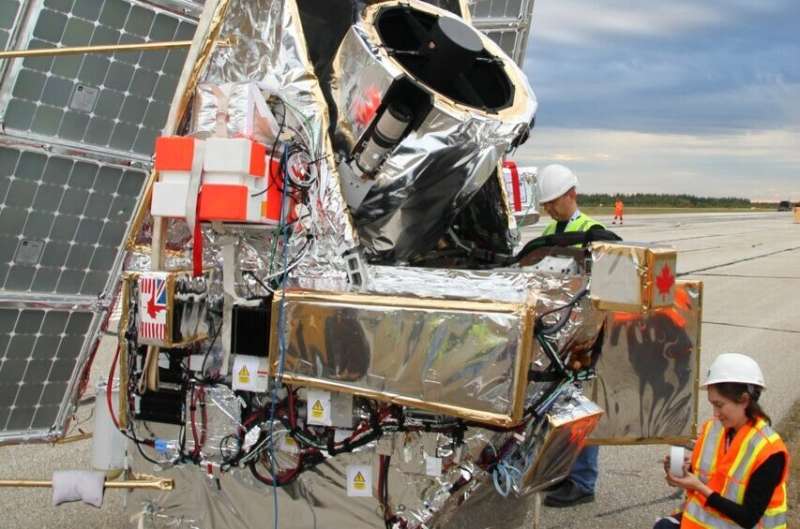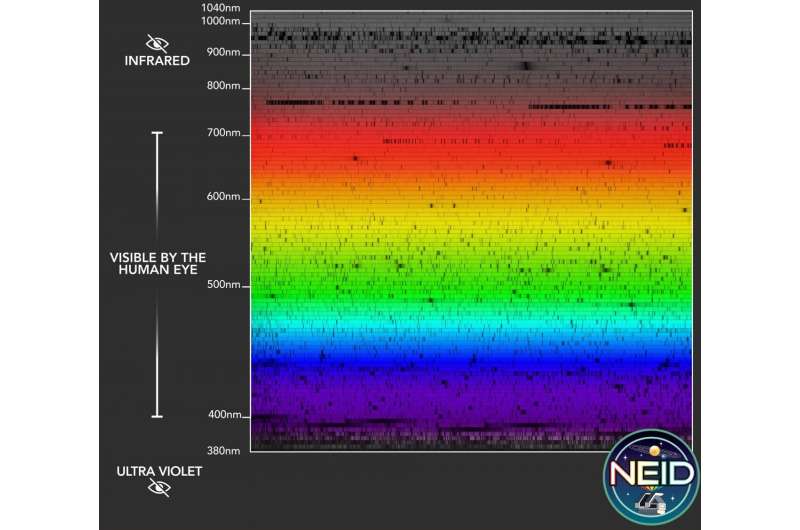
Copernical Team
SuperBIT: A low-cost, balloon-borne telescope to rival Hubble

Durham, Toronto and Princeton Universities have teamed up with NASA and the Canadian Space Agency to build a new kind of astronomical telescope. SuperBIT flies above 99.5% of the Earth's atmosphere, carried by a helium balloon the size of a football stadium. The telescope will make its operational debut next April and when deployed should obtain high-resolution images rivaling those of the Hubble Space Telescope. Mohamed Shaaban, a Ph.D. student at the University of Toronto, will describe SuperBIT in his talk today (Wednesday 21 July) at the online RAS National Astronomy Meeting (NAM 2021).
Light from a distant galaxy can travel for billions of years to reach our telescopes. In the final fraction of a second, the light has to pass through the Earth's swirling, turbulent atmosphere. Our view of the universe becomes blurred.
New method predicts 'stealth' solar storms before they wreak geomagnetic havoc on Earth

Exoplanet discovery tool begins its mission

Bezos says 'awestruck' by Earth's beauty as seen from space
 Jeff Bezos said the "most profound" aspect of his brief journey to space was the spectacular view he saw of Earth, which left him amazed by its beauty and fragility.
"Every astronaut who's been up into space, they say that it changes them ... they look at it and they're kind of amazed and awestruck by the Earth and its beauty, but also by its fragility, and I can vouch for that," he told rep
Jeff Bezos said the "most profound" aspect of his brief journey to space was the spectacular view he saw of Earth, which left him amazed by its beauty and fragility.
"Every astronaut who's been up into space, they say that it changes them ... they look at it and they're kind of amazed and awestruck by the Earth and its beauty, but also by its fragility, and I can vouch for that," he told rep After conquering Earth, Bezos completes new mission in space
 Jeff Bezos fulfilled his longtime dream of going into space Tuesday and potentially opening a door to space tourism - possibly the next mission for the man who built one of Earth's biggest business empires.
The Amazon founder spent a few minutes in space on reusable rocket built by his firm Blue Origin as part of a four-member crew, in a small step toward his stated goal of building floatin
Jeff Bezos fulfilled his longtime dream of going into space Tuesday and potentially opening a door to space tourism - possibly the next mission for the man who built one of Earth's biggest business empires.
The Amazon founder spent a few minutes in space on reusable rocket built by his firm Blue Origin as part of a four-member crew, in a small step toward his stated goal of building floatin Hubble returns to full science observations and releases new images
![These images, from a program led by Julianne Dalcanton of the University of Washington in Seattle, demonstrate Hubble's return to full science operations. [Left] ARP-MADORE2115-273 is a rarely observed example of a pair of interacting galaxies in the southern hemisphere. [Right] ARP-MADORE0002-503 is a large spiral galaxy with unusual, extended spiral arms. While most disk galaxies have an even number of spiral arms, this one has three. Credit: Science: NASA, ESA, STScI, Julianne Dalcanton (UW) Image processing: Alyssa Pagan (STScI) Hubble returns to full science observations and releases new images](https://scx1.b-cdn.net/csz/news/800a/2021/hubble-returns-to-full.jpg)
World's richest man Jeff Bezos blasts into space

The wealthiest man on the planet Jeff Bezos spent a few minutes in space Tuesday on Blue Origin's first human mission, a key moment for a fledgling industry seeking to make the final frontier accessible to elite tourists.
"A very happy group of people in this capsule," said Bezos after the spaceship touched down in the west Texas desert following an 10-minute hop to the Karman line and back.
The four-member crew exchanged high-fives and hugged family who came to meet them at the landing site.
Earlier, the New Shepard capsule reached at an altitude of 66.5 miles (107 kilometers), allowing the passengers to experience weightlessness while admiring the curve of the Earth.
"It's dark up here," said barrier-breaking female aviator Wally Funk, who joined Bezos, his brother and 18-year-old Dutchman Oliver Daemen, who became the youngest ever astronaut.
Blue Origin's first crewed flight minted four new astronauts

The world's richest man Jeff Bezos, his brother, a Dutch teenager who is now the youngest ever astronaut and a barrier-breaking female US aviator who is now the oldest have now been to space.
Here is a brief look at the crew of Blue Origin's historic first human flight on Tuesday.
The tycoon, Jeff Bezos
Jeff Bezos, 57, left behind the planet where he made his vast fortune for a few minutes on a spaceship built by the company he founded in 2000, when he was still merely a single-digit billionaire.
Six years before that, he started a small online bookstore called Amazon.com out of his garage. Bezos' net worth is today estimated at more than $200 billion.
Amazon magnate Bezos blasts into space on own rocket
 The wealthiest man on the planet Jeff Bezos lifted off on his own rocket and reached outer space on Tuesday, a key moment for a fledgling industry seeking to make the final frontier accessible to elite tourists.
Blue Origin's first crewed mission, an 11-minute hop from west Texas to beyond the Karman line and back again, coincided with the 52nd anniversary of the first Moon landing.
"It'
The wealthiest man on the planet Jeff Bezos lifted off on his own rocket and reached outer space on Tuesday, a key moment for a fledgling industry seeking to make the final frontier accessible to elite tourists.
Blue Origin's first crewed mission, an 11-minute hop from west Texas to beyond the Karman line and back again, coincided with the 52nd anniversary of the first Moon landing.
"It' Reprogrammable satellite fuelled prior to launch

A sophisticated telecommunications satellite capable of being completely repurposed in orbit has been fuelled ready for its launch on 30 July.
